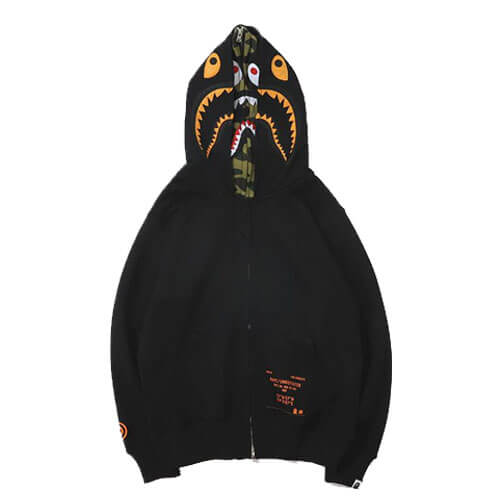In the rapidly evolving landscape of digital design, understanding how color trends and timing influence visual communication is essential for creating engaging and effective experiences. Modern digital environments are shaped not only by technological advancements but also by cultural shifts, psychological insights, and seasonal cycles. This article explores the intricate relationship between color choices, timing, and audience engagement, illustrating how designers leverage these elements to craft compelling digital narratives.
- 1. The Significance of Color Trends and Timing in Digital Design
- 2. Fundamental Concepts: How Color Trends Shape Visual Communication
- 3. The Power of Timing: Synchronizing Design with Cultural and Technological Cycles
- 4. Semantic and Symbolic Significance of Color in Modern Contexts
- 5. Leveraging Historical and Cultural Symbols in Digital Design
- 6. Case Study: «Le Zeus»—A Modern Illustration of Mythology, Color, and Timing
- 7. Non-Obvious Factors Influencing Color and Timing in Digital Design
- 8. Future Directions: How Emerging Technologies and Cultural Shifts Will Shape Color Trends and Timing
- 9. Conclusion: Integrating Color Trends and Timing for Effective Digital Design
1. The Significance of Color Trends and Timing in Digital Design
Modern digital design is a dynamic field that continuously adapts to shifting cultural, technological, and psychological landscapes. Its primary goal is to communicate effectively and evoke specific emotional responses from diverse audiences. Central to this endeavor are two interconnected elements: color trends and timing.
Cultural influences, such as societal values or popular aesthetics, significantly sway color decisions. For example, the resurgence of pastel palettes during spring reflects seasonal optimism and renewal, while bold, contrasting colors may dominate during events like Black Friday to stimulate urgency. Technological factors, including advances in display technology and AI, enable more precise and personalized color applications.
Timing—whether linked to seasons, holidays, or cultural moments—affects how audiences perceive and engage with digital content. Launching a campaign aligned with a relevant cultural event amplifies its impact, as seen in brands releasing limited edition designs during festive seasons or major sporting events. This synchronization ensures that the design resonates with the zeitgeist, increasing visibility and emotional connection.
2. Fundamental Concepts: How Color Trends Shape Visual Communication
a. The psychology of color and its impact on user engagement
Research indicates that colors influence perceptions and behaviors. Blue often conveys trust and professionalism, making it popular in corporate branding, while red can evoke excitement or urgency, useful in sales promotions. Understanding these psychological associations allows designers to craft visuals that guide user responses subconsciously.
b. Historical evolution of color trends in digital media
Color trends evolve alongside technological capabilities and cultural shifts. The early digital era favored limited palettes due to hardware constraints. As screens improved, vibrant and diverse color schemes emerged, reflecting broader aesthetic movements like minimalism or maximalism. Trends such as neon colors in the 1980s and pastel tones in the 2010s exemplify this evolution.
c. The role of industry standards and precedents in setting color palettes
Standardized color systems like Pantone and industry-specific palettes establish benchmarks, ensuring consistency across platforms. These standards influence trends by providing a shared vocabulary, enabling rapid adoption of new color schemes aligned with current aesthetics.
3. The Power of Timing: Synchronizing Design with Cultural and Technological Cycles
a. Understanding seasonal and event-driven timing in digital campaigns
Timing campaigns around seasons or events leverages existing cultural momentum. For instance, using warm, earthy tones during autumn or bright, energetic colors during summer aligns visual cues with audience expectations, enhancing engagement.
b. The importance of real-time data and trend analysis in design updates
Platforms like social media provide real-time insights into trending colors and themes. Analyzing hashtag usage, influencer content, or trending memes enables designers to adapt quickly, ensuring their visuals stay relevant and impactful.
c. Case study: How timely color trends boost product visibility and user retention
Consider a tech company launching a new product during a cultural moment, such as Pride Month. By adopting rainbow palettes aligned with the event, the brand not only demonstrates solidarity but also benefits from heightened visibility. Similarly, aligning content updates with trending color schemes can significantly improve user retention, as users perceive the brand as current and culturally aware.
For example, a digital campaign timed during a major sporting event might incorporate team colors to foster emotional connection, as seen in campaigns that adapt their palettes dynamically to match ongoing matches.
4. Semantic and Symbolic Significance of Color in Modern Contexts
a. Cultural symbolism of colors and their reinterpretation in digital spaces
Colors carry deep cultural meanings that evolve over time. White symbolizes purity in Western cultures but can signify mourning in parts of Asia. Digital designers reinterpret these symbols to align with contemporary narratives, often blending or subverting traditional meanings to evoke specific responses.
b. Examples of color symbolism: The eagle as Zeus’s emblem influencing branding choices
In ancient mythology, the eagle represented divine authority and power, famously associated with Zeus. Modern brands sometimes adopt this symbolism subtly; for instance, a brand emphasizing strength and authority may incorporate eagle imagery or color schemes reminiscent of mythological themes, reinforcing their brand message through deep-rooted cultural symbols.
c. The connection between historical symbolism and contemporary design language
Designers often draw from historical symbols to evoke emotional resonance. Using mythological motifs or colors associated with deities can lend a sense of timelessness and authority to digital interfaces or branding efforts. This approach taps into collective subconscious associations, enriching user experience.
5. Leveraging Historical and Cultural Symbols in Digital Design
a. How historical references enrich modern aesthetics and storytelling
Incorporating symbols like Spartan warriors’ red cloaks or ancient Greek motifs can add layers of meaning, creating a narrative that resonates emotionally. Such references evoke notions of strength, resilience, and tradition, enhancing brand storytelling in digital spaces.
b. Case example: Spartan warriors’ red cloaks and bronze helmets as a metaphor for strength and tradition
A contemporary fitness app might use a bold red color palette inspired by Spartan warriors to symbolize power and endurance. This choice not only attracts attention but also aligns with the brand’s message of strength—an emotional cue rooted in historical symbolism.
c. Incorporating symbolic elements to evoke emotional responses and enhance brand identity
By thoughtfully integrating symbolic elements, designers can create visual identities that evoke trust, loyalty, or inspiration. For example, a logo inspired by ancient symbols can impart a sense of heritage and reliability, making the brand more memorable and emotionally engaging.
6. Case Study: «Le Zeus»—A Modern Illustration of Mythology, Color, and Timing
a. Concept and design inspiration rooted in ancient symbolism (e.g., Zeus’s eagle)
«Le Zeus» exemplifies how ancient mythological symbols can inspire contemporary digital design. Drawing from Zeus’s emblematic eagle, the project employs bold, commanding colors like deep golds and striking blacks to evoke power and authority. The design integrates modern aesthetics with timeless symbolism, creating a visual narrative that resonates across cultures.
b. The strategic use of color trends to evoke power, authority, and innovation
By aligning with current color trends—such as metallic tones and high-contrast palettes—«Le Zeus» enhances its visual impact and relevance. The strategic application of trending colors amplifies the brand’s message, making it stand out in a crowded digital space.
c. Timing the release and updates to align with cultural moments and digital trends
The release of «Le Zeus» was carefully timed to coincide with major cultural moments emphasizing strength and innovation, such as global tech conferences and mythology festivals. Regular updates aligned with evolving color trends and cultural conversations ensure the project remains relevant and engaging. For further insights on how strategic timing enhances digital presence, see zur Seite → learn more.
7. Non-Obvious Factors Influencing Color and Timing in Digital Design
a. The role of volatility and unpredictability in capturing audience attention (e.g., Twitch streamers)
Platforms like Twitch demonstrate how spontaneous, unpredictable content can dominate attention. Streamers often use vibrant, eye-catching colors and dynamic timing to stand out amid high volatility. Leveraging unpredictability can be a powerful tool in digital design, emphasizing the need for agility.
b. How platform-specific behaviors and audience habits influence color choices and timing
Different platforms have unique visual cultures. For instance, Instagram favors bright, pastel palettes for lifestyle content, while LinkedIn leans towards muted, professional tones. Understanding these nuances allows designers to optimize timing and color schemes for maximum engagement.
c. The impact of technological advancements, such as AI-driven trend prediction
AI tools analyze vast datasets to forecast upcoming color trends and optimal timing windows. These technologies enable designers to stay ahead of the curve, crafting visuals that are both innovative and culturally relevant.
8. Future Directions: How Emerging Technologies and Cultural Shifts Will Shape Color Trends and Timing
a. The role of augmented reality, virtual reality, and AI in personalized and dynamic color schemes
Emerging technologies enable real-time adaptation of colors based on user preferences, location, or cultural context. Augmented reality (AR) and virtual reality (VR) facilitate immersive experiences where color schemes evolve dynamically, enhancing personalization.
b. Anticipating future cultural shifts and their influence on design aesthetics
As societal values evolve, so will color symbolism. For example, increased emphasis on sustainability may foster the popularity of earthy, natural tones. Designers must stay attuned to these shifts to maintain relevance.
c. Preparing for rapid trend cycles and the importance of adaptability in digital design
Trends now evolve within weeks, demanding agile workflows. Embracing flexible design systems and real-time data analysis ensures brands can swiftly adapt their color schemes and timing strategies, maintaining a competitive edge.
9. Conclusion: Integrating Color Trends and Timing for Effective Digital Design
The interplay between color choices and timing is fundamental in shaping digital experiences that resonate with audiences. Thoughtful integration of current trends, cultural symbols, and strategic timing enhances engagement and builds brand loyalty. As technology advances and cultural landscapes shift, designers must remain adaptable, leveraging tools like AI and AR to stay ahead.
“Effective digital design is not just about aesthetics; it’s about timing and symbolism working in harmony to create meaningful connections.”
By understanding these principles and continuously adapting to new trends and technologies, designers can craft digital experiences that are not only visually appealing but also culturally relevant and emotionally compelling. For in-depth insights and innovative tools that help synchronize design with cultural moments, explore zur Seite → learn more.



